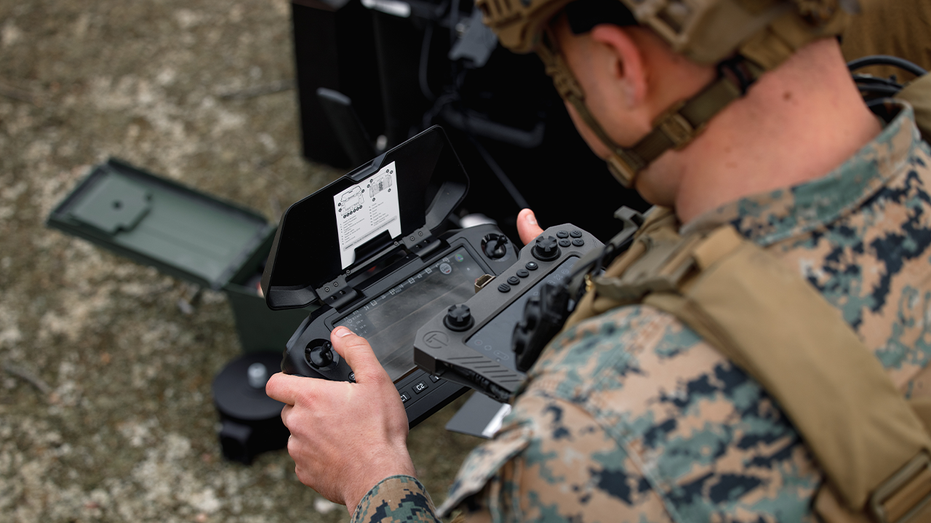Ukraine’s Unexpected Attack Signals Need for Major Drone Strike to Shift US Defense Policy, Experts Warn
Growing concerns over drone threats highlight urgent need for unified federal and private safeguards to bolster homeland security.

Ukraine’s recent surprise attack targeting Russian offensive weapon caches is prompting discussions about U.S. vulnerabilities to similar tactics, especially as drone warfare becomes increasingly accessible to both state and non-state actors. According to Col. Seth Krummrich, a retired Army Special Forces commander, the chief issue in the United States is not technological incapacity but rather the lack of clear policy and authority to intercept or engage drones that could pose a threat.
Krummrich emphasizes that even civilian agencies often face significant hurdles in obtaining authorization for drone-interception measures, with rare exceptions such as during NFL events. He cites Ukraine’s innovative use of drone swarms as a lesson, highlighting how easily drones can be covertly deployed, rapidly converging on targets and inflicting damage within minutes. The expertise to modify and weaponize drones, he warns, is now widely available, making them a low-cost yet high-impact tool for hostile entities.
One of the biggest concerns raised is the difficulty in mitigating fast-moving quadcopter drones, which can travel up to 35 miles per hour—making them a formidable challenge for even the most skilled marksmen. Krummrich outlines the potential for a range of threat actors, from foreign adversaries like China and North Korea to domestic extremist groups, to leverage this technology for attacks on high-profile events or critical infrastructure, potentially from great distances.
Gen. David Grange, who recently observed Ukraine’s operations firsthand, calls their drone deployment a "textbook example of asymmetric warfare," likening it to a modern David versus Goliath scenario. He notes that if the U.S. were faced with a coordinated drone assault, interception would be extremely difficult after the attack commenced, drawing parallels to the unforeseen logistics of the 9/11 attacks. Grange further estimates that thousands of individuals with affiliations to gangs, terrorist organizations, or hostile states are already present within U.S. borders, and could exploit current gaps in drone defense for relatively little cost and with a low likelihood of early detection.
Despite these vulnerabilities, federal authorities acknowledge the risks and are actively working to improve preparedness. "It’s not a matter of complacency—it’s a matter of catching up to a rapidly evolving threat landscape," Grange explains, reinforcing the urgent need for adaptation and innovation in homeland defense strategy.
Recent incidents underscore these concerns: last year saw a spike in suspicious drone sightings in New Jersey, including near military installations and former President Donald Trump’s golf club. In addition, multiple Chinese surveillance balloons entered U.S. airspace, signaling another vector of aerial vulnerability. Grange describes these events as "critical wake-up calls" that highlight the need for a shift from reactive measures to proactive deterrence.
"We’re not starting from zero, but we are in a race to close the gap between emerging threats and our ability to counter them," Grange stresses. He cautions against panic, advocating for a comprehensive and collaborative approach involving all levels of government—as well as private industry and technology developers—to effectively address and mitigate these new forms of warfare.
Security experts draw connections between drone and cybersecurity threats, noting that over three-quarters of drones sold globally are manufactured in China. These drones, along with the software they rely on, present overlapping risks to critical U.S. infrastructure and sensitive information. As drone and cyber threats continue to evolve at a rapid pace, experts argue that maintaining vigilance and technological discipline is essential to national security.
In response to growing concerns, the Department of Defense confirms it routinely reevaluates potential threats and updates response plans accordingly, though specific operational details remain classified for security reasons. Meanwhile, some have looked abroad for solutions: Israel’s Iron Dome system, developed with substantial U.S. backing, has proven effective in neutralizing aerial threats, whereas the U.S. currently lacks an equivalent comprehensive missile defense network.
With proposals such as the so-called "Golden Dome" under discussion in political circles, the pressure is mounting for the United States to accelerate its efforts in closing critical gaps in drone and counter-drone capabilities. As the Ukraine-Russia conflict demonstrates the shifting nature of modern warfare, American policymakers are being urged to move decisively before a major incident reveals the full extent of the nation’s vulnerabilities.




